Thiruvengaivasal Vyagrapureeswarar Temple, Pudukottai
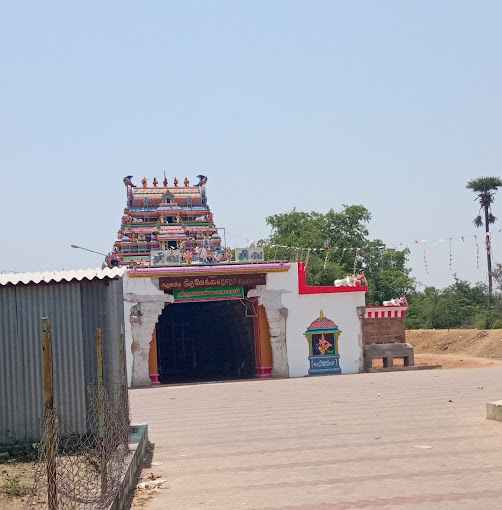
Address
Thiruvengaivasal Vyagrapureeswarar Temple, Pudukottai
Thiruvengaivasal, Illupur Taluk,
Pudukkottai District – 622 005
Phone: +91 4322 221 084
Mobile: +91 94861 85259
Moolavar
Vyagrapureeswarar
Amman
Brahadambal
Introduction
Vyagrapureeswarar Temple is dedicated to Lord Shiva, located in Thiruvengaivasal Village near Pudukottai Town in Illupur Taluk in Pudukottai District of Tamil Nadu, India. Presiding Deity is called as Vyagrapureeswarar and Mother is called as Brahadambal. This temple is considered as Guru Parihara Sthalam.
Puranic Significance
This temple might have been built by Cholas in 9th century CE and was extensively renovated by Pandyas in 13th century CE.
Thiruvengaivasal: As per legend, once celestial cow Kamadhenu was late to attend the court of Indra. Indra banished the celestial cow from heaven and cursed her to live the life of an ordinary cow on earth. Kamadhenu came to earth and sought the advice of Sage Kapila who had his hermitage in the forest in Thirukokarnam. Sage Kapila advised her to carry Ganga water in its ears each day and perform ablutions to the Shiva Linga under the Magizha tree. Kamadhenu worshipped Lord Shiva as advised by Sage Kapila. Once, when Kamadhenu was going for the worship, Lord Shiva, to test its determination, intercepted in the guise of a tiger at Thiruvengaivasal and threatened to devour her. Kamadhenu begged tiger to leave her as she was on her way to Shiva Pooja. She promised to return back. She was allowed to go on condition that she returned immediately after the worship was over. The cow, as promised, returned to the tiger after finishing her Shiva Pooja.The tiger changed its shape and granted darshan with Parvathi. Lord Shiva carried the cow to heaven. The place where the tiger confronted the cow came to be called as Thiru Vengai Vaasal (Vengai means tiger). As Lord Shiva appeared here as tiger to threaten Kamadhenu, he came to be called as Vyagrapureeswarar (Vyakram means tiger in Sanskrit).
Shrine for the damaged idol of Brahadambal: There is an east facing shrine for damaged ancient idol of Goddess Brahadambal,situated near southern entrance. This shrine was built during the reign of Raja Ramachandra Thondaiman. It is said that when Raja Ramachandra Thondaiman decided to replace the damaged old idol with a new idol. Usually, the damaged idols would be discarded and thrown in the temple tank. Goddess appeared in his dreams and instructed him not to discard the old idol but to preserve it in a shrine. As directed, the king constructed a separate shrine for the goddess and kept the damaged old idol in that shrine.
Special Features
This temple is facing towards west with a three tiered Rajagopuram.The base of the Rajagopuram dates back to the late Pandyas while the upper tiers were built during the first half of 20th century CE. There is a closed mandapam at the front of Rajagopuram.This Mandapam is supported by massive lion pillars. The Sanctum Sanctorum consists of Sanctum,Antrala, Maha Mandapam and Mukha Mandapam.
Nandi, Balipeedam and Dhwaja Sthambam can be found facing the sanctum.There is a pole situated to the south of the Nandi. This Pole is considered as village deity and called as Kambathadi Karuppar. Presiding Deity is called as Vyagrapureeswarar and is facing west. He is housed in the sanctum in the form of Lingam.The Sanctum is built in such a way that the sun rays fall on the Lingam in the evenings.
There are no Dwarapalakas on either side of the sanctum instead there is a Vinayaga idol found opposite to the Linga.There are no koshta idols around the sanctum wall except the Vishnu idol in the koshta behind the sanctum. Chandikeswarar Shrine can be seen in his usual location.The idol of Gnana Dakshinamoorthy can be seen in the cloister in the southern prakaram.This idol is noted for its rare iconographic features He is depicted in Ardhanareeswarar form (half male & half female representing Shiva and Parvathy as one). Hence, this Dakshinamoorthy came to be called as Ardhanareeswarar Dakshinamoorthy. He is seated in the utkutikasana posture suitable for concentration. One leg is supported vertically on the pedestal and the other is hung down in this posture. He is four armed.
He holds Japamala & Naga in upper hands and lower right hand shows chin mudra & lower left hand caresses the head Muyalagan. A Vinayaga idol housed a Peeda can be seen on the right side of the Dakshinamoorthy. He is called as Avudai Ganapathy. Mother is called as Brahadambal. She is housed in a separate south facing shrine. Her shrine is situated in Maha Mandapam. The Maha Mandapam houses the modern bronze Utsava idols used in the temple processions. The old Pancha Loha idols are kept in the Mukha Mandapam. There is an east facing shrine for damaged ancient idol of Goddess Brahadambal, situated near southern entrance. This shrine was built during the reign of Raja Ramachandra Thondaiman.
The penance spot of Lord Muruga in the temple is in a hexagonal shape in the prakara. Lord Muruga is sitting on a Lotus with one leg folded and the other stretched in penance posture. He does not have his Vel weapon or his peacock with him. Generally, Lord Muruga can be seen either in an ascetic or royal style in temples but this penance style is rare. There is a shrine housing Nine Vinayagas representing Navagrahas in this temple.
There is a shrine for of Sudamani Sadira Vidangar Nayakar along with his consort Pirattiyaar in the temple premises. There are shrines for Theradi Vinayaga, Kasi Viswanathar with his consort Visalakshi, Nalvar, Kala Bhairavar, Suryan, Sapta Matrikas, Saneeswarar, Gajalakshmi and Naga idols in the temple premises. Sthala Vriksham is Vanni tree. It is believed that the tree is around 800 years old.
Belief
Devotees pray here for wedding boon and removal of obstacles in the way, education and child boon. Devotees perform abishek to Lord and Mother and offer Vastras.
Festivals
Thaipusam (Jan-Feb), Masi Maha Shivrathri (Feb-Mar), 10 days Vaikasi Visakam (May-Jun), Margazhi Thiruvadhirai (Dec-Jan), Panguni Uthiram (Mar-Apr) and Thiru Karthikai (Nov-Dec) are the festivals celebrated in the temple.
References:
https://tamilnadu-favtourism.blogspot.com/2015/12/vyakarapuriswarar-temple.html
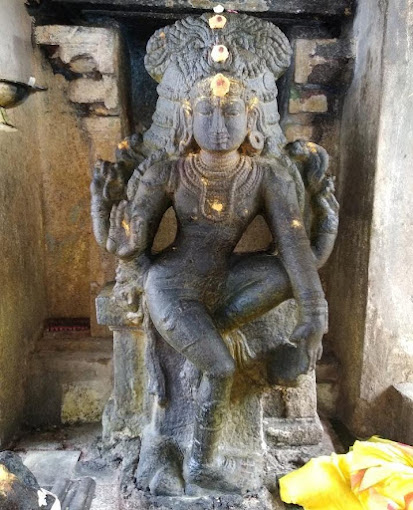
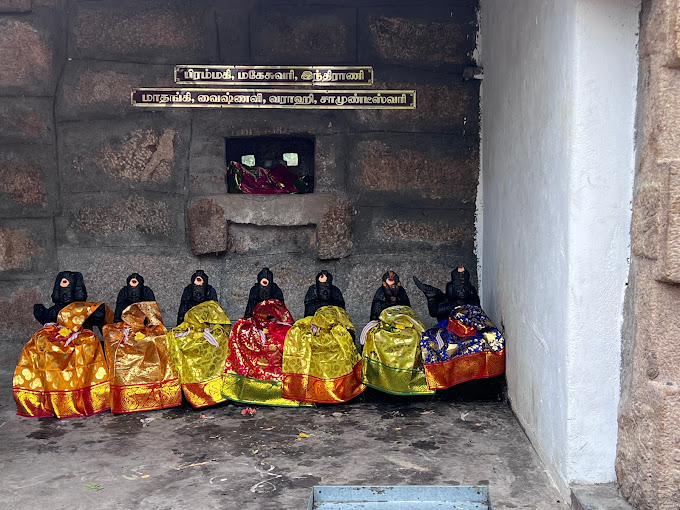
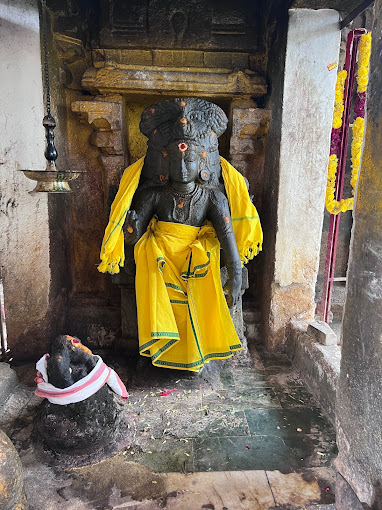

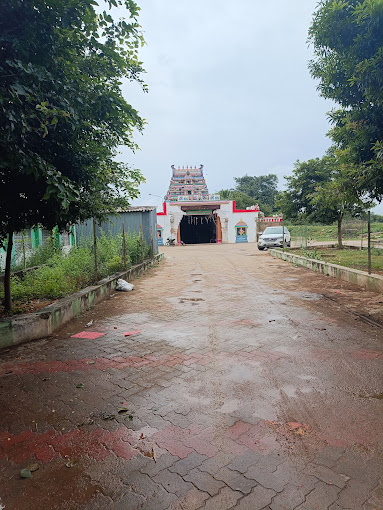
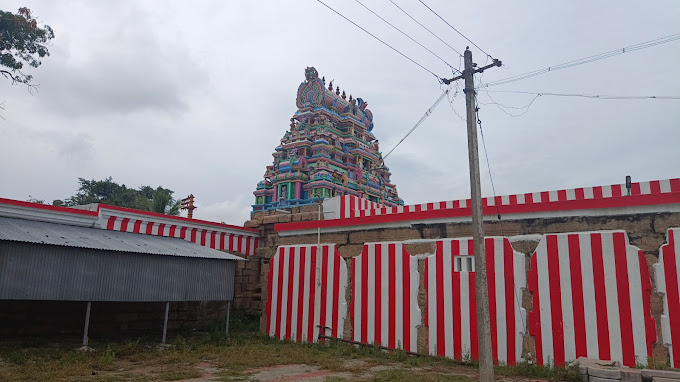

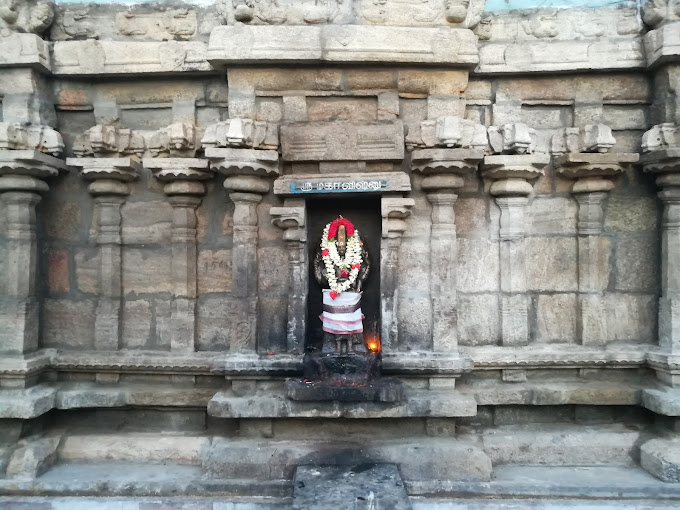
Century/Period
Cholas in 9th century CE
Nearest Bus Station
Thiruvengaivasal
Nearest Railway Station
Pudukottai station
Nearest Airport
Madurai




